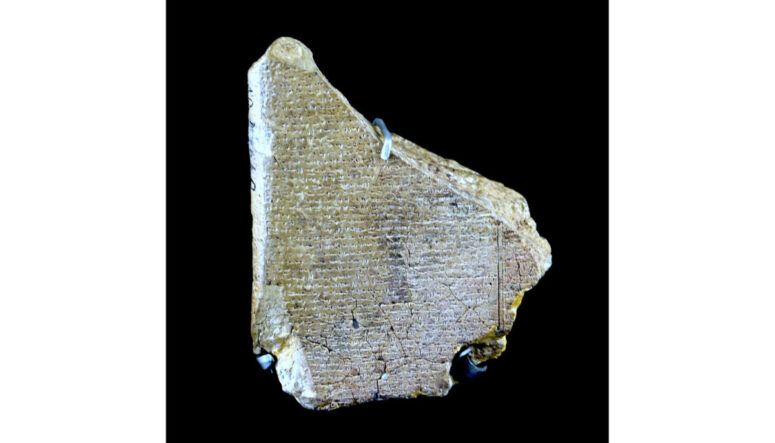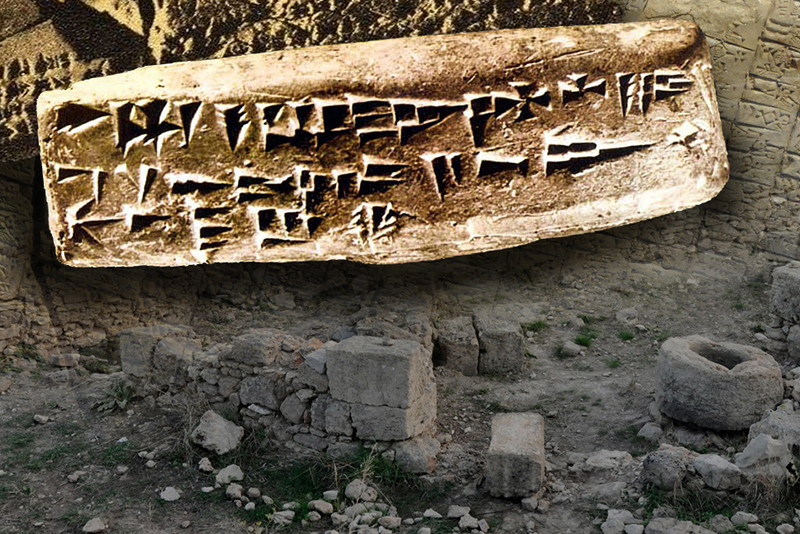
The archive of the Canaanite city-state of Ugarit was discovered by a French archaeological expedition in 1929. The Canaanites inhabited the territory of modern Syria, Israel and Palestine until its conquest by the Jews under the leadership of Joshua and the “Late Bronze Age collapse” leading to the fall of trade relations and the death of the once powerful states and cities (including Ugarit), changing the ethnic composition of the Middle East countries.

The Canaanites of Ugarit wrote on clay tablets in cuneiform characters, borrowing this technique from the surrounding people with the major difference of writing down sounds, and not syllables. The cryptanalysis of the Ugaritic writing done in 1930 showed that the epic of this tribe strikingly echoes the text of the Holy Scriptures. A bright example of this congeniality is Psalm 27, coinciding almost entirely with an ancient Canaanite hymn. The similarity is mainly due to the similar vocabulary composition of the Ugaritic and biblical texts (Hebrew and Ugaritic languages were related). The close proximity of the Jewish and Ugaritic cultures also played a significant role in this phenomenon. It is no coincidence that the Old Testament law often demanded from the Jews drawing distinct boundaries between themselves and the pagan beliefs and rituals of the Canaanites.
Take, for example, the well-known prohibition: “You shall not boil a kid in its mother’s milk.” (Ex 34:26). Understanding this verse literally does not in the least clarify the deep meaning of this commandment. Here is an example of the ancient Greek translation from the Septuagint: “Do not sacrifice (οὐ προσοίσεις) a kid in his mother’s milk.” For a long time, biblical scholars considered this translation a mere loose semantic adaptation and did not find any feasible arguments in its favor. This was until the discovery of the Ugaritic cuneiform archives, where in one of the texts (KTU 1.23) researchers came across the letters: TBH GD BHLB. There are many different translation options for these letter combinations, but they all boil down to the same: “slaughter a kid in fat / milk.” Thus, the accuracy of the Septuagint translation obtained additional justification.

Where, then, did the verb “boil” come from? The word “tbh” in the Ugaritic language means “to slaughter cattle”; this is its oldest meaning. The Hebrew verb “טבח” means the same. But over time, in a number of Semitic languages, the root tbh also began to denote the process of cooking a slaughtered animal. Apparently, the scribes tried to elaborate on the meaning of this polysemantic word and at some point replaced it with the verb “בשל” (“cook”), achieving the opposite result and further obscuring the meaning of the commandment, which originally sounded like this: “The best of the first fruits of your ground you shall bring to the house of the Lord your God. You shall not sacrifice a kid in its mother’s milk” (Ex 23:19). This means: give thanks to the Lord for the fertility of the earth and do not commit any magical superstitious actions (as the pagan Canaanites did). The Canaanites slaughtered and sacrificed to their gods a pregnant goat (“bearing fruit”) as a symbol of fertility and a grateful sacrifice. It is precisely this magical symbolism that the Bible condemns, requiring to thank God simply by bringing Him the first fruits of the harvest.
Thus, the Ugaritic archives shed light on the original meaning of the commandment: ritual sacrifices cannot be performed in order to increase the fertility of the land and to get a rich harvest. Instead one must turn to God Himself.
Sergey Kovach. PhD in Theology, lecturer at the Kiev Theological Academy
Translated by The Catalogue of Good Deeds
Source: https://foma.ru/klinopisnye-tablichki-iz-ischeznuvshego-goroda-ugarit-chto-otkryla-nam-jeta-udivitelnaja-nahodka-arheologov.html




